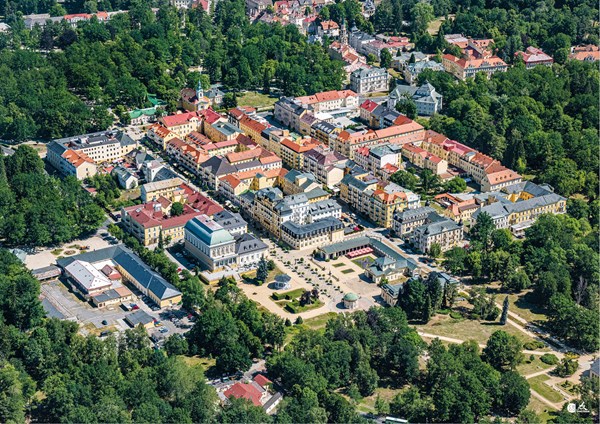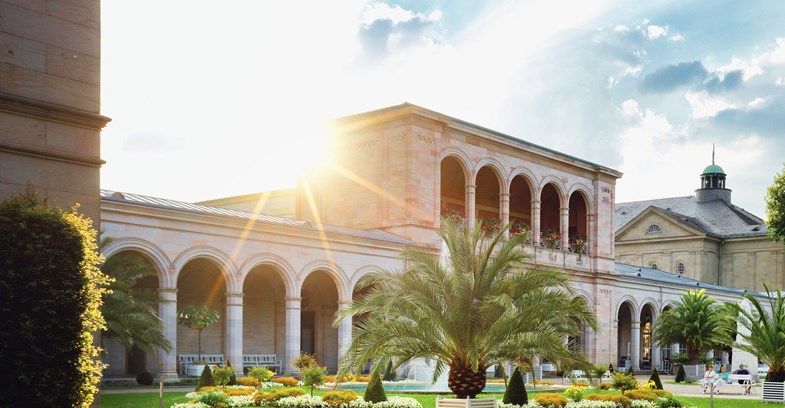Common themes in each unique town
Anatomy of a Great Spa Town
European spa towns are centred on natural ‘curative’ mineral springs that act as nuclei for a specialised urban form and function designed for the combined medicinal, social and leisure use of mineral water.
The ‘Great Spa Towns of Europe’ component parts or towns, are distinguished by their dimension, complexity and integrity of the various elements of this urban form. They epitomise the grandest and most international resorts of the many hundreds of towns of the European spa phenomenon that flourished from around 1700 to 1930. They are the most fashionable and successful, and are the most significant examples that survive with the highest levels of integrity and authenticity.
In their prime, the influence of ‘Great Spa Towns' in matters of European cultural and artistic life, medicine, science, humanities, politics and the development of a polite society was second only to the greatest capitals of Europe.

Anatomy of a Great Spa Town
 The Internationality of a Great Spa Town
is an idealised diagram of the historic urban landscape showing a distinct spa quarter based on the natural springs is shown at the centre with various elements radiating out from this core. In some towns there may be one source, or small clusters of sources in a single spa quarter. In some towns polycentric spa quarters have arisen as the result of multiple or widely distributed sources.
The Internationality of a Great Spa Town
is an idealised diagram of the historic urban landscape showing a distinct spa quarter based on the natural springs is shown at the centre with various elements radiating out from this core. In some towns there may be one source, or small clusters of sources in a single spa quarter. In some towns polycentric spa quarters have arisen as the result of multiple or widely distributed sources.
Each Great Spa Town shares common elements yet their structure and spatial layout varies depending on local geographical conditions and constraints. The common elements are:
- Springs and sources and ensembles of spa buildings enabling people to ‘take the waters’ such as baths, pump rooms, drinking halls, and prototypes such as the ‘kurhaus’ and ‘kursaal’.
- Places to take gentle exercise – walking and promenading (also meeting and been seen by others) in paved and covered colonnades and galleries and landscaped parks and gardens.
- Spaces for social activity – facilities developed for mixing and socialising in assembly rooms and conversation rooms, and for ‘diversions’ such as gaming. Casinos, theatres, opera houses, concert and dance halls can be found in most of the Great Spa Towns.
- A range of accommodation to house large numbers of guests. The number and size of hotels as well as numerous villas is a distinctive attribute of the ‘Great Spa Towns of Europe’.
- Infrastructure, such as hospitals based on mineral springs, funiculars that lead to lookout towers or restaurants, river transport and railways, facilities to bottle and export the water and its by-products and even the pipework transporting the all-important water.
- Vistas: buildings and spaces connect visually with their picturesque setting of idealised nature.
- The 'Therapeutic Spa Landscape’ – a green or woodland environment used regularly for exercise as a contribution to the therapy of the cure, and for relaxation and enjoyment. Extensive networks of paths might be linked to particular medical conditions. Golf, tennis and horseracing were also provided.
The attributes above can be seen in each Great Spa Town and are physically represented by the following elements which are common to each town. While each of these elements is seen clearly in each town, they differ according to local geographical conditions and constraints, making each town wonderfully unique while exhibiting the same features as all the other towns in the World Heritage Site.
- Location and Setting
- Springs: natural mineral water sources (thermal and cold)
- Urban ensemble of the Spa Town; with specific references to ‘spa architecture’
- The green environment of the ‘therapeutic and recreational spa landscape’
- Spa Infrastructure
- Internationalism, scientific, artistic and literary values, events and cultural tradition
Nomination of the Great Spa Towns of Europe Volume 1-5, Description of the Property

